I always knew my bovine team of Jerseys was destined for greatness. But I didn’t know they’d be the solution to Planet Earth’s demise. (I see a blockbuster movie in the making—Planet of the Cows.)
How many essays have I written where I’ve made my case for the use of protein harvested from local deer, elk, and moose rather than soybean and oats grown in the midwest where the land was tilled, sprayed, and eroded in order for a trucker to deliver granola and soymilk to our doorsteps? I’ve reasoned further, Aren’t bucolic, perennial pastures growing high-end protein better than the constant turning of soil?
 But first a little background. For the most part, I’ve grown up following Allan Savory—he was a hero of mine when I was a young environmentalist. However, now that I’m an older, “well-seasoned” environmentalist with things like a dairy to manage, I haven’t caught even a glimpse of him in the last 10 years.
But first a little background. For the most part, I’ve grown up following Allan Savory—he was a hero of mine when I was a young environmentalist. However, now that I’m an older, “well-seasoned” environmentalist with things like a dairy to manage, I haven’t caught even a glimpse of him in the last 10 years.
Now I know why.
He’s been busy figuring out a way to reverse climate change.
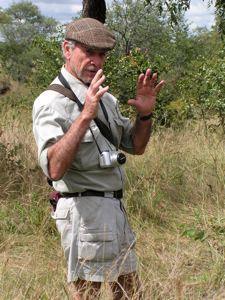
Photo courtesy of The Savory Institute
Calling all cows!
In the 1950s, Allan Savory was a young research biologist and game ranger in eastern Africa. He was passionate about wildlife and came to vilify the livestock that seemed to run ramshod over the native habitat.
A world away and decades later, I followed suit.
While working as a wilderness ranger in the Uinta Mountains of Utah, I learned to blame herds of sheep that grazed their way across public land for the environmental degradation I saw with my own eyes. The solution was clear: get rid of the sheep and restore the wilderness.
Savory saw it that way, too.
But as he developed a growing and persistent concern for the state of the world’s wild grasslands, he resorted to desperate measures. Watching the lush African landscapes that he loved shrivel into barren deserts and native people being driven to starvation, he deduced that overgrazing was the problem.
Overgrazing by livestock had initiated the growing global problem of desertification (and consequently climate change), he reasoned, but wild game were now contributing to the crisis as well.
Something had to be done.
He conducted extensive studies. He gathered data. He came to some difficult conclusions.
As a recent headline stated, “This man shot 40,000 elephants before he figured out that herds of cows can save the planet.”
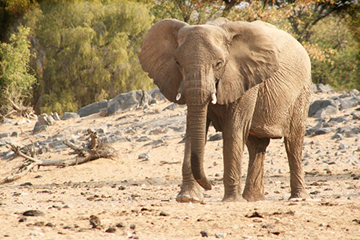
Photo by Namibnat via Wikimedia Commons
This statement, albeit sensationalistic, is true.
Despite his love for elephants, Savory recommended that the government of Zimbabwe drastically cull large herds in order to revive a dying ecosystem.
Thousands and thousands of elephants were culled.
Imagine his shock when the effort made no real improvement in the health of the grasslands.
“This was the saddest and gravest mistake of my life,” he has confessed.
Yet, it was a mistake that awakened this visionary man to the true solution for his ailing homeland, and, ultimately, an ailing planet.
There’s a lot of science behind his premise, but the basic equation is simple:
Desertification is rapidly claiming the lion’s share of the earth’s land and is fueling climate change faster than the burning of fossil fuels. The tan areas of this map show how extensive the crisis is:
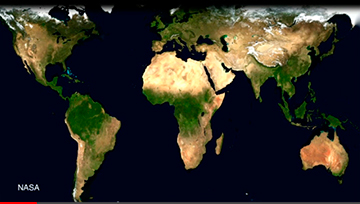
Photo courtesy of NASA
The solution, which Allan Savory has discovered through a lifetime of hard-earned lessons, is …
grazing.
Savory has joined forces with a team of revolutionaries to establish The Savory Institute, a groundbreaking effort that taps into the way large herds of wild herbivores naturally interact with—and benefit—the land. “I have a message for you that offers more hope that you can imagine.”
Looking to the past, once again, is the key to preserving the future.
Historically, vast herds of herbivores such as buffalo, caribou, and wildebeest moved like tides across the grasslands of the earth. They grazed, pooped, peed, drooled, and trampled the ground as they went—but the result wasn’t destructive.
Instead, the intensive and unique disturbance caused by these herds was nature’s tool for keeping the soil and vegetation healthy and ALIVE.
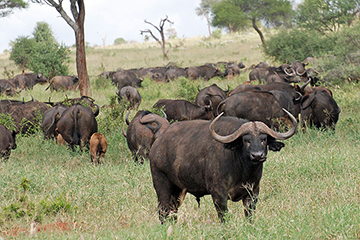
Photo of a herd of African water buffalo by Harvey Barrison via Wikimedia Commons
As human populations have grown, wild herds have dwindled while till-plant-spray agriculture practices have swept the planet (including most of North America and its heartland—go back and check the map), and the soil has become increasingly sterile and well, dry. The domino effect is devastating:
- Deserts are claiming grasslands at an alarming rate across most of the earth’s land surface.
- People are losing their livelihoods and are toppling into poverty, famine, and war.
- And all the while, our climate is changing in ways we never imagined possible.
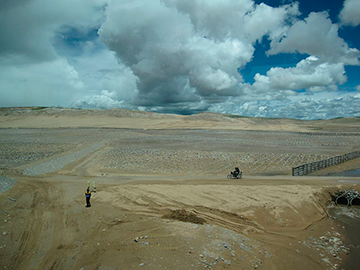
Photo of Tibetan desert by Bernt Rostad via Wikimedia Comons
I’ve seen it here in Idaho, and I’m betting you’ve seen it where you live, too.
So you can see why, to me, Allan Savory looks a lot like a knight in shining armor.
The Savory Institute has been busy introducing his concept of Holistic Management to countries around the world and the video footage below is living proof that he’s getting it right this time.
How?
By helping people create strategies to purposely manage domestic livestock to mimic and restore the natural cycle of herd disturbance, decay, and revitalization of grasslands.
And the best part for me? Now I have living proof that my love of cows can save the world!
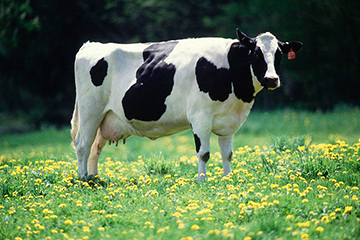
Photo courtesy of the USDA
If you want to know more, I highly recommend watching Allan Savory’s 22-minute presentation on TED. Grab a cup of tea and settle in.
Push play and in no time at all, our future on earth will seem a whole lot more hopeful by the time Allan has rested his savory case … but not his cause. I’m heading out to give my hero girls and guys a hug, one by one.





















































This research is quite amazing. I have been one of those who thought it was the over grazing of lands that was the problem. But it all does make sense when you look at history and the eons of balance between large herds and adequate grasslands. I for one want to hear more of what Allan Savory has said.Thanks for sharing!
I’ve lived in Bay City, Michigan all my life. In recent years I’ve watched as more and more local “big” farmers eradicate fence lines and small woods blocks time and time again. As I drive down the road now, I see their precious topsoil laying on top of the snow in the ditches. All in the name of almighty profit. They just don’t listen. Keep up the good work where you are; I’ll keep yelling in my neck of the woods.
Well, another MaryJane article to raise my level of intelligence! Thanks! And now, I’m off to find a Jersey for my back yard. Or maybe a Brown Swiss…
I love Allen Savory and have only recently been introduced to his Holistic Management practices. I also just found your site and love it as well. 🙂